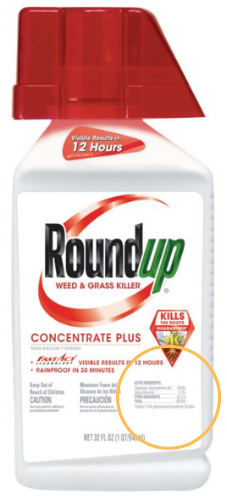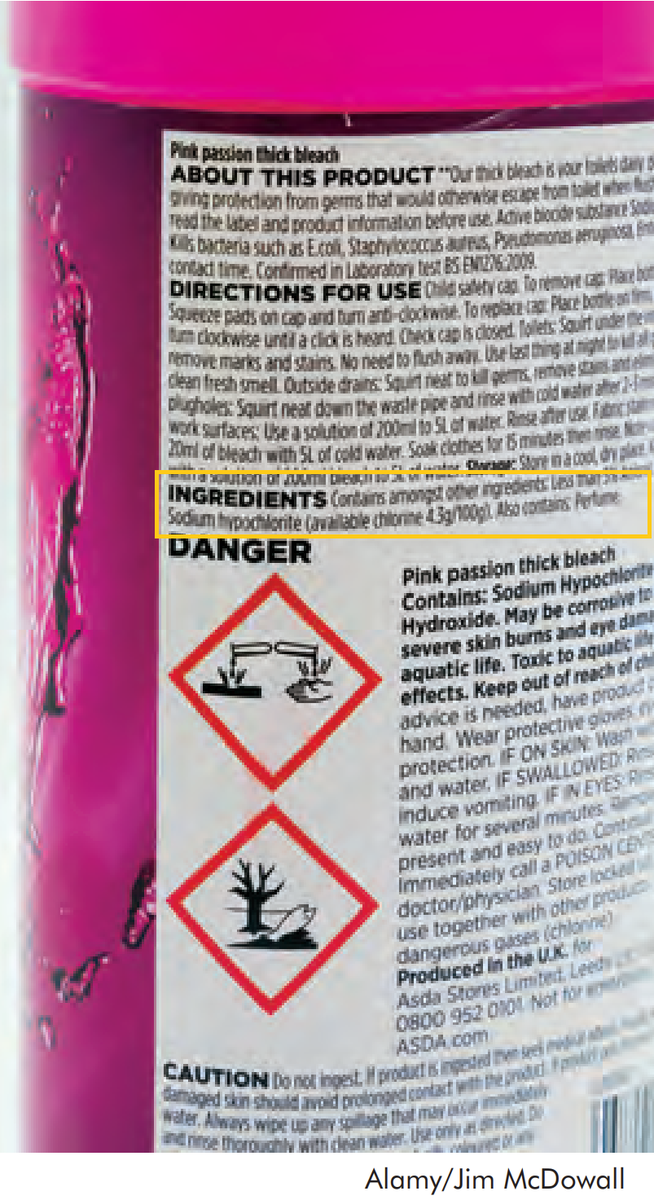Gateway on Pesticide Hazards and Safe Pest Management
How To Find Ingredients in Pesticide Products
Beyond Pesticides offers resources below to evaluate the health and ecological effects of specific chemical exposure from ACTIVE INGREDIENTS in pesticide products, as well as regulatory information and supporting scientific documents. Because various pesticide products can contain more than one active ingredient, it is important to READ the LABEL to determine chemical components.
With 192 different active ingredients and counting, it is essential to establish the connection between the use of these chemicals and their respective hazards.
View the step-by-step guide on how to search for the active ingredient(s) in pesticide products below:
- Go to U.S. EPA's Pesticide Product and Label System and enter the product name. The generic product name may vary.
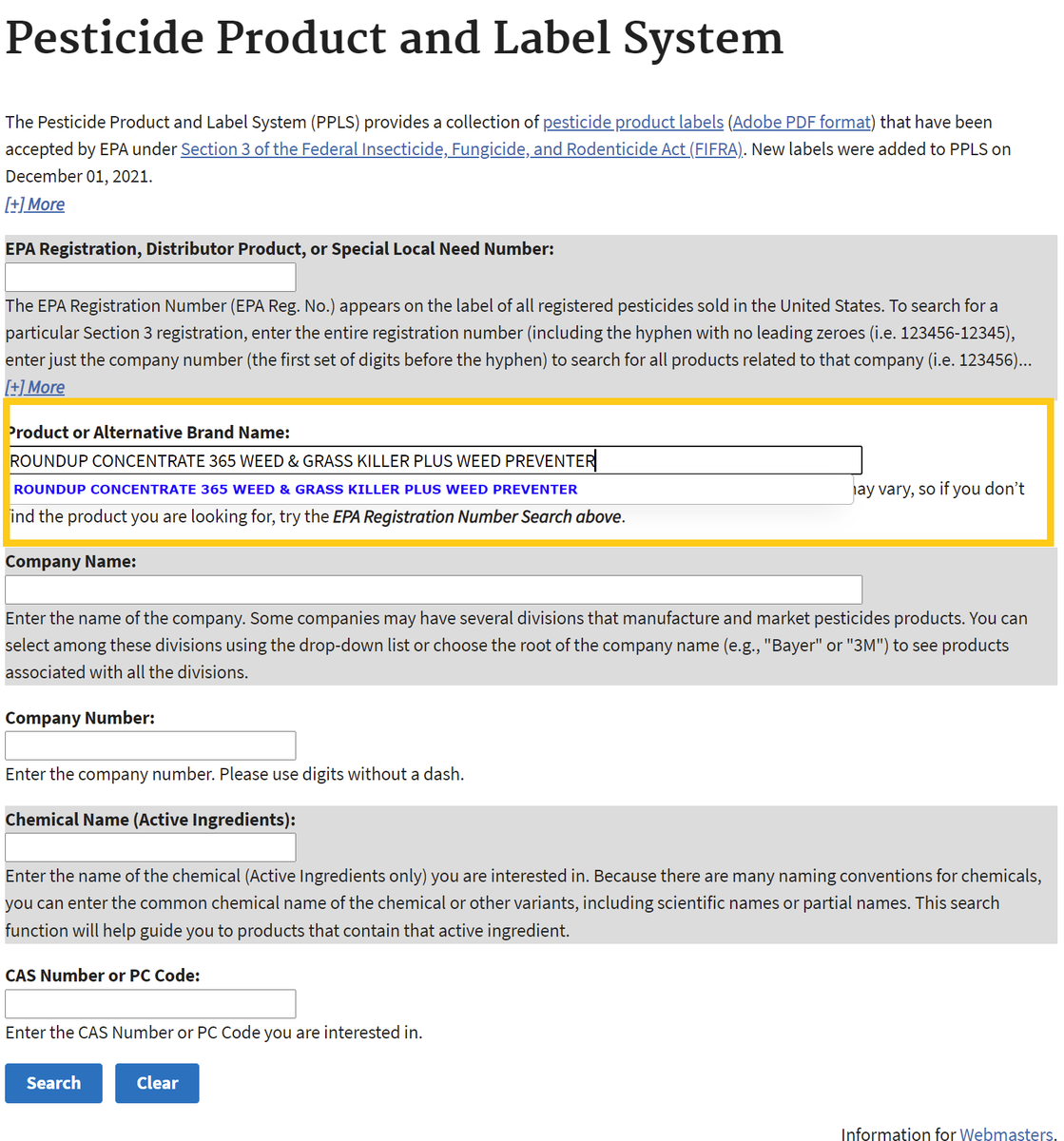
- After searching, click on the chemical ingredients tab or the link for the most recent label to find Active Ingredients.
Chemical List Label List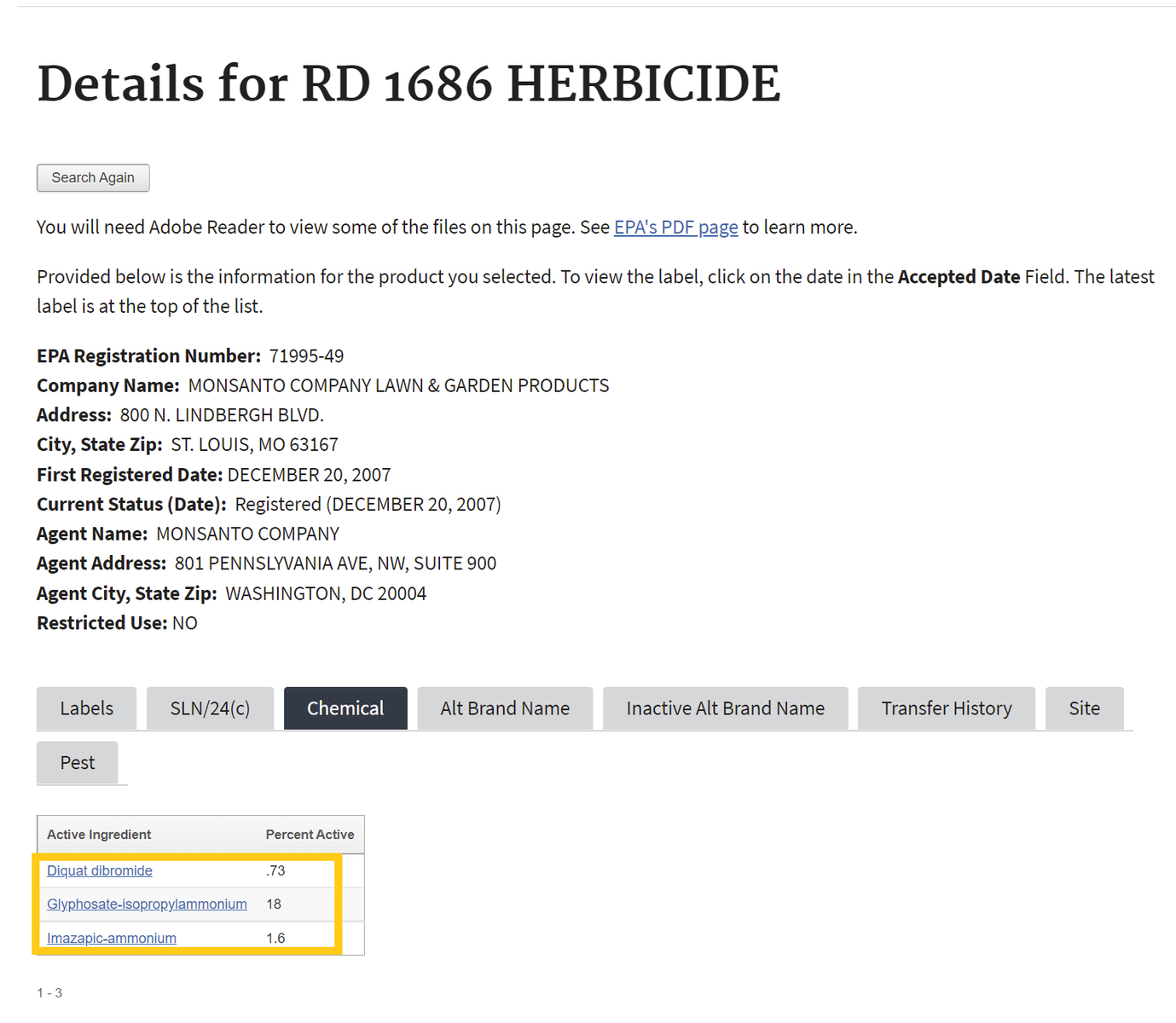
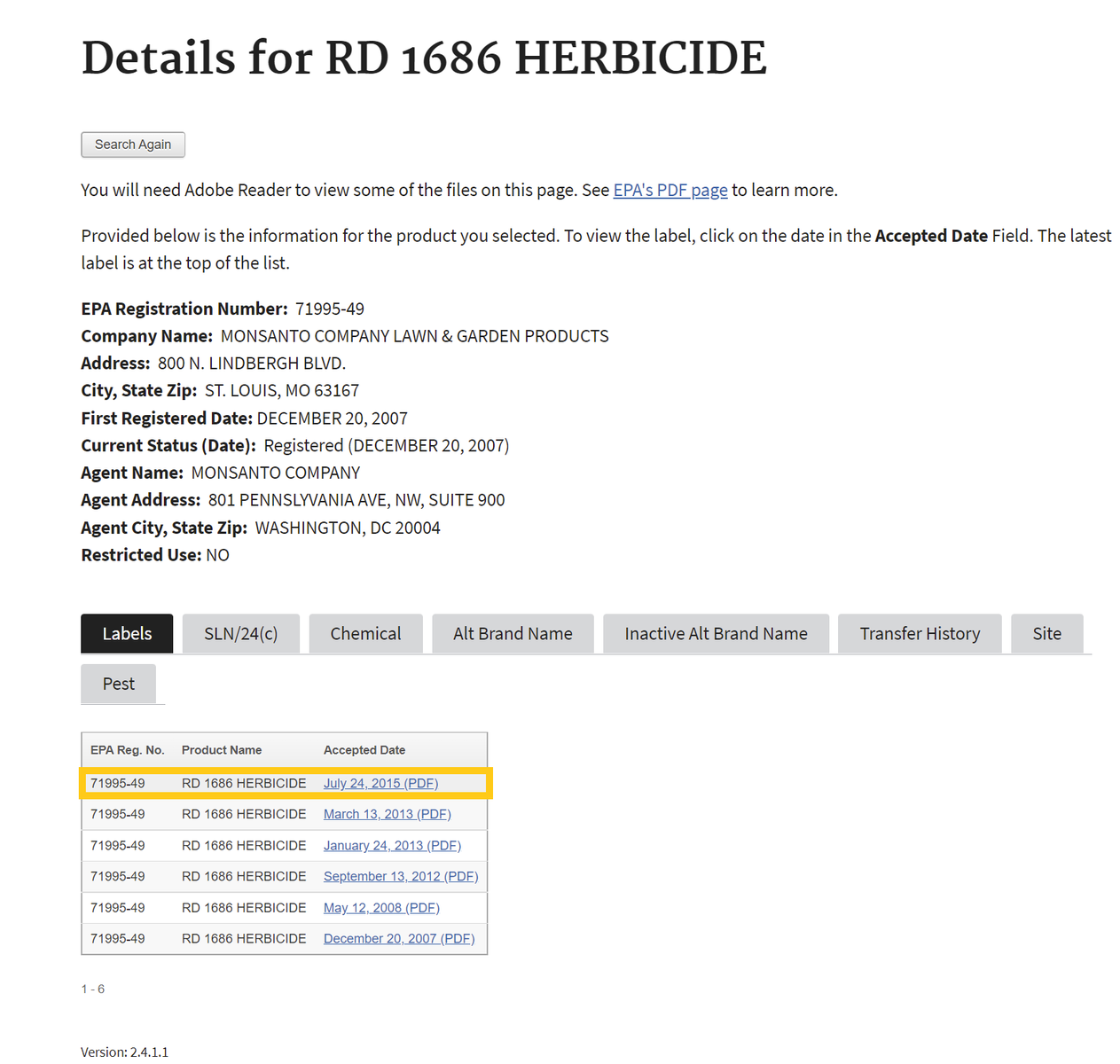
If one selects the chemical ingredients tab, skip to Step 4 . If not, proceed to step number 3 - To find the active ingredient(s) on the label, search for the page in the document containing the date of registration. Usually, the active ingredients section occurs within the first few pages of the label document.
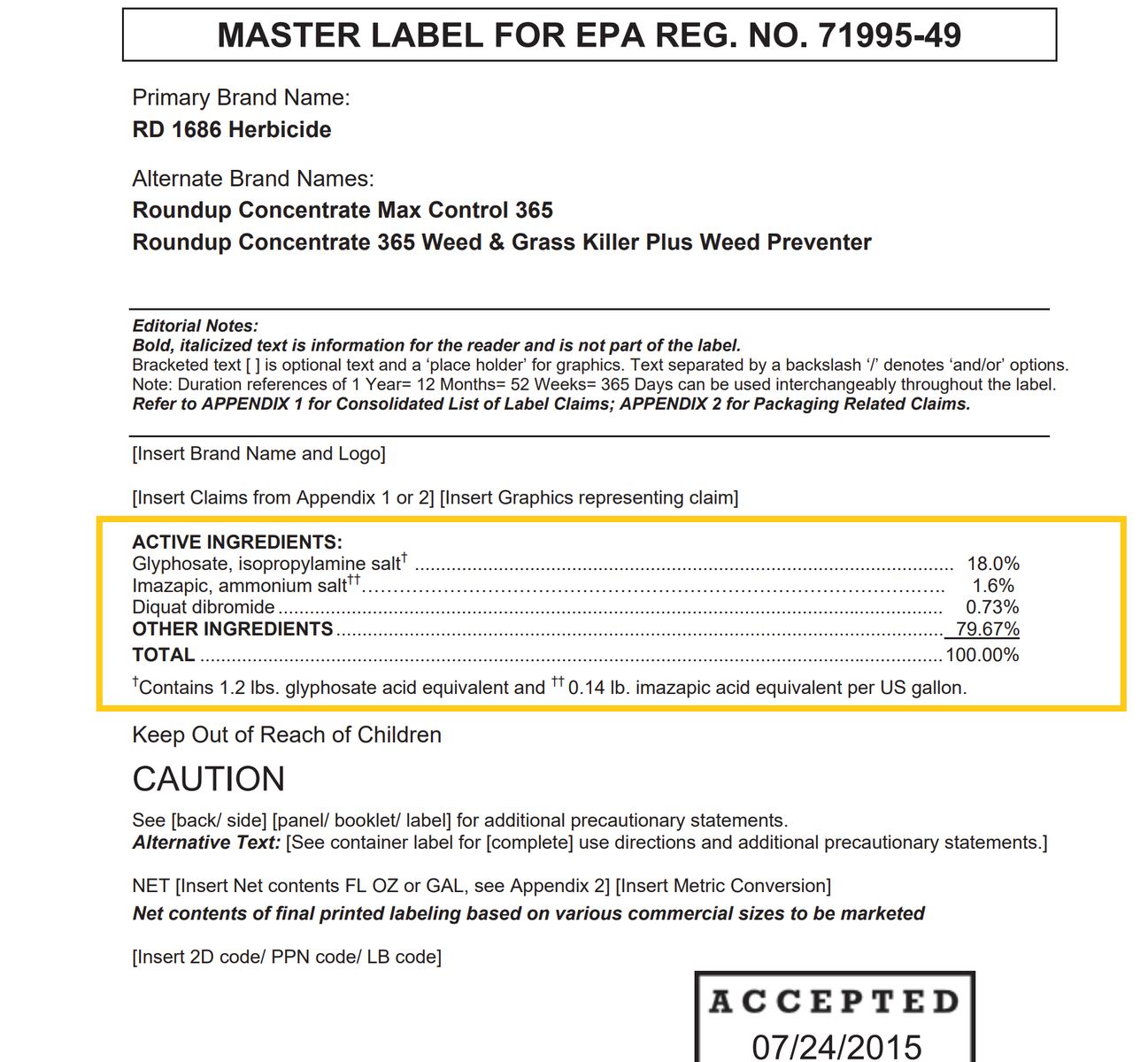
- Return to the Beyond Pesticides Gateway and search for the active ingredient name in the yellow box to the right or from the list below.
Boscalid
General Information
- Product Names:
- Chemical Class: Carboxamide (aka anilide) Fungicide
- Uses: Agriculture, Turf
- Alternatives: Organic agriculture, Organic lawn care
- Beyond Pesticides rating: Toxic
Health and Environmental Effects
- Cancer: Possible (43)
- Endocrine Disruption: Not documented
- Reproductive Effects: Not documented
- Neurotoxicity: Not documented
- Kidney/Liver Damage: Yes (39)
- Sensitizer/ Irritant: Not documented
- Birth/Developmental: Not documented
- Detected in Groundwater: Not documented
- Potential Leacher: Not documented
- Toxic to Birds: Not documented
- Toxic to Fish/Aquatic Organisms: Yes (27, 39)
- Toxic to Bees: Not documented
Additional Information
- Regulatory Status:
- EPA Factsheet (7/2003)
- Supporting information:
- PAN Pesticides Database: Boscalid (Pesticide Action Network)
- Studies:
- Organic farming reduces pesticide load in a bird of prey. Fuentes, E. et al. (2024) Organic farming reduces pesticide load in a bird of prey, Science of The Total Environment. Available at: https://www.sciencedirect.com/science/article/pii/S0048969724029255.
- Flooding as a Vector for the Transport of Pesticides from Streams to Riparian Plants. Fiolka, F. et al. (2024) Flooding as a Vector for the Transport of Pesticides from Streams to Riparian Plants, American Chemical Society ES&T Water. Available at: https://pubs.acs.org/doi/abs/10.1021/acsestwater.4c00571.
- Pesticide-Induced Inflammation at a Glance. Lopes-Ferreira, M. et al. (2023) ‘Pesticide-induced inflammation at a glance’, Toxics, 11(11), p. 896. doi:10.3390/toxics11110896.
- Intensive vegetable production under plastic mulch: A field study on soil plastic and pesticide residues and their effects on the soil microbiome. Beriot, N., Zornoza, R., Lwanga, E. H., Zomer, P., van Schothorst, B., Ozbolat, O., Lloret, E., Ortega, R., Miralles, I., Harkes, P., van Steenbrugge, J., & Geissen, V. (2023). Intensive vegetable production under plastic mulch: A field study on soil plastic and pesticide residues and their effects on the soil microbiome. The Science of the total environment, 900, 165179. https://doi.org/10.1016/j.scitotenv.2023.165179
- Assessing pesticide residue occurrence and risks in the environment across Europe and Argentina. Alaoui, A., Christ, F., Abrantes, N., Silva, V., González, N., Gai, L., Harkes, P., Navarro, I., Torre, A., Martínez, M. Á., Norgaard, T., Vested, A., Schlünssen, V., Aparicio, V. C., Campos, I., Pasković, I., Pasković, M. P., Glavan, M., Ritsema, C., & Geissen, V. (2024). Assessing pesticide residue occurrence and risks in the environment across Europe and Argentina. Environmental pollution (Barking, Essex : 1987), 363(Pt 1), 125056. https://doi.org/10.1016/j.envpol.2024.125056
- Current-use pesticides in vegetation, topsoil and water reveal contaminated landscapes of the Upper Rhine Valley, Germany. Mauser, K.M., Wolfram, J., Spaak, J.W. et al. Current-use pesticides in vegetation, topsoil and water reveal contaminated landscapes of the Upper Rhine Valley, Germany. Commun Earth Environ 6, 166 (2025). https://doi.org/10.1038/s43247-025-02118-2
- Fate of pesticide residues in beer and its by-products. Hakme, E., Kallehauge Nielsen, I., Fermina Madsen, J., Storkehave, L. M., Skjold Elmelund Pedersen, M., Schulz, B. L., … Duedahl-Olesen, L. (2023). Fate of pesticide residues in beer and its by-products. Food Additives & Contaminants: Part A, 41(1), 45–59. https://doi.org/10.1080/19440049.2023.2282557
- An insight into the sorption kinetics of boscalid onto soils: Effect of general soil properties. Bhatt, D., Srivastava, A., & Srivastava, P. C. (2023). An insight into the sorption kinetics of boscalid onto soils: Effect of general soil properties. Chemosphere, 325, 138274. https://doi.org/10.1016/j.chemosphere.2023.138274
- Environmentally relevant concentrations of boscalid exposure affects the neurobehavioral response of zebrafish by disrupting visual and nervous systems. Qian, L., Qi, S., Wang, Z., Magnuson, J. T., Volz, D. C., Schlenk, D., Jiang, J., & Wang, C. (2021). Environmentally relevant concentrations of boscalid exposure affects the neurobehavioral response of zebrafish by disrupting visual and nervous systems. Journal of hazardous materials, 404(Pt A), 124083. https://doi.org/10.1016/j.jhazmat.2020.124083
- Cardiac and neurobehavioral impairments in three phylogenetically distant aquatic model organisms exposed to environmentally relevant concentrations of boscalid. Bedrossiantz, J., Goyenechea, J., Prats, E., Gómez-Canela, C., Barata, C., Raldúa, D., & Cachot, J. (2024). Cardiac and neurobehavioral impairments in three phylogenetically distant aquatic model organisms exposed to environmentally relevant concentrations of boscalid. Environmental pollution (Barking, Essex : 1987), 347, 123685. https://doi.org/10.1016/j.envpol.2024.123685
- Deciphering the diversity, composition, function, and network complexity of the soil microbial community after repeated exposure to a fungicide boscalid. Han, L., Xu, M., Kong, X., Liu, X., Wang, Q., Chen, G., Xu, K., & Nie, J. (2022). Deciphering the diversity, composition, function, and network complexity of the soil microbial community after repeated exposure to a fungicide boscalid. Environmental pollution (Barking, Essex : 1987), 312, 120060. https://doi.org/10.1016/j.envpol.2022.120060
- Mitochondrial dysfunction induced in human hepatic HepG2 cells exposed to the fungicide kresoxim-methyl and to a mixture kresoxim-methyl/boscalid. Vandensande, Y., Carbone, M., Mathieu, B., & Gallez, B. (2024). Mitochondrial dysfunction induced in human hepatic HepG2 cells exposed to the fungicide kresoxim-methyl and to a mixture kresoxim-methyl/boscalid. Redox Report, 29(1). https://doi.org/10.1080/13510002.2024.2424677
- Co-exposure to boscalid and amoxicillin inhibited the degradation of boscalid and aggravated the threat to the earthworm. Han, S., Sun, W., Sun, X., Yue, Y., Miao, J., Dang, X., Diao, J., Teng, M., & Zhu, W. (2024). Co-exposure to boscalid and amoxicillin inhibited the degradation of boscalid and aggravated the threat to the earthworm. Pesticide biochemistry and physiology, 203, 106022. https://doi.org/10.1016/j.pestbp.2024.106022
- Effects of Fungicide and Adjuvant Sprays on Nesting Behavior in Two Managed Solitary Bees, Osmia lignaria and Megachile rotundata. Artz, Derek & Pitts-Singer, Theresa. (2015). Effects of Fungicide and Adjuvant Sprays on Nesting Behavior in Two Managed Solitary Bees, Osmia lignaria and Megachile rotundata. PLoS ONE. 10. 10.1371/journal.pone.0135688.
- Occurrence of Current-Use Pesticides in Paired Indoor Dust, Drinking Water, and Urine Samples from the United States: Risk Prioritization and Health Implications. Xie, Y., Li, J., Salamova, A., & Zheng, G. (2025). Occurrence of Current-Use Pesticides in Paired Indoor Dust, Drinking Water, and Urine Samples from the United States: Risk Prioritization and Health Implications. Environmental science & technology, 59(25), 12507–12519. https://doi.org/10.1021/acs.est.5c00961
- Pesticide residues in European agricultural soils – A hidden reality unfolded. Silva, Vera et al. “Pesticide residues in European agricultural soils - A hidden reality unfolded.” The Science of the total environment vol. 653 (2019): 1532-1545. doi:10.1016/j.scitotenv.2018.10.441








.png)
